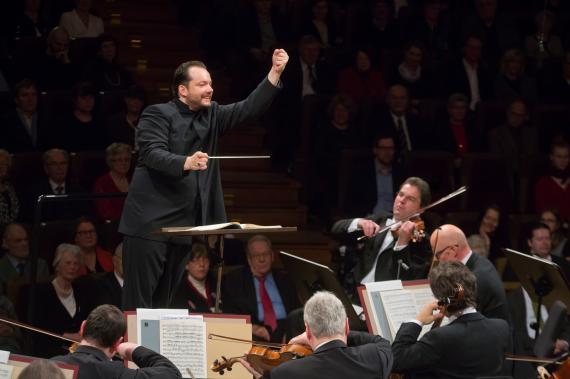Orchestra Gewandhausorchester Leipzig
PROFILE
The Gewandhaus Orchestra can look back with pride today over an history of over 250 years. Back then, it was the Leipzig merchants who founded and financed the concert society, which has since made music history and brought forth one of the world’s best-known and most renowned orchestras. Felix Mendelssohn Bartholdy, Arthur Nikisch, Wilhelm Furtwängler, Franz Konwitschny and Kurt Masur have all been Gewandhauskapellmeisters. They left their imprint on this unique musical culture, which Herbert Blomstedt carried forward into the new millennium. His successor, the 19th Gewandhauskapellmeister, Riccardo Chailly, embodies tradition and change simultaneously and is be the first musical director to hold both offices (Gewandhauskapellmeister and Musical Director of the Leipzig Opera) concurrently for over 35 years ago.
In only one season and within Leipzig itself, around 70 »Grand Concerts« feature on the Gewandhaus Orchestra’s schedule. For over 200 years, it has also served as the regular orchestra for the Leipzig Opera, in addition to its weekly performances of the cantatas by Johann Sebastian Bach at St. Thomas’s Church, as well as further 35 guest appearances a season throughout the world and numerous other recordings. Leipzig’s reputation as a city & music is largely attributable to the varied activities of the Gewandhaus Orchestra and in particular the orchestra’s standing as the oldest concert orchestra to have been founded by the merchant classes.
Nobody could have predicted the success story of the Gewandhaus when, in March of 1743, sixteen Leipzig merchants gathered to found a concert society, of only 16 musicians under the name of the »Grand Concert«.
After three decades in the »Three Swans Inn« on the Brühl, increasing audience interest meant it suddenly necessary to find a new home: in 1781 the orchestra moved into a 500-seat hall with superb acoustics in the assembly hall of the cloth traders, the »Gewandhaus« (»Garment House«), to which the orchestra and its Leipzig headquarters owe their name to this day.
When this concert hall was no longer able to accommodate the huge number of people now eager to attend performances, a second Gewandhaus, classic in style, was then dedicated in December of 1884. A large hall for 1,500 listeners and a further chamber music hall reminiscent of the old Gewandhaus hall of only 500 seats offered the musicians a home base in keeping with their quality and their now international rank.
During a bombing raid in February of 1944, the concert building was badly damaged, and the arduously preserved ruins were finally blown up in March of 1968. For a good three decades, concerts were given in a temporary congress hall near the Leipzig Zoo. Thanks to the untiring efforts of the Gewandhauskapellmeister at the time, Kurt Masur, the orchestra was finally able to move into a modern performance venue, ideally suited to all its musical, acoustical and technical requirements: the third Gewandhaus on the Augustusplatz.
To this day, the majestic Schuke organ in the great hall bears an inscription with a quote from the Seneca the younger, one which has been the motto of the Gewandhaus since 1781: »Res severa verum gaudium« (»True pleasure is a serious business«.)
All together, this hall, with its over 1,900 seats arranged in semi-circular form, the Mendelssohn Hall with 500 seats, and the light-flooded Gewandhaus foyer form a unique architectural ensemble, aesthetically enriched by statues and busts of musicians, regularly changing painting exhibitions and, above all, by the monumental, four-story high ceiling painting: »Song of Life« by the Leipzig artist, Sighard Gille.
Today, over 600 events take place every year at the Gewandhaus. Of these, the »Grand Concerts« by the Gewandhaus Orchestra form the heart of activities along with concerts by the Gewandhaus Chorus and Children’s Chorus, the concerts of the numerous chamber music ensembles, the Gewandhaus Quartet, the Gewandhaus Wind Quintet and the Gewandhaus Octet, and, last bot not least, the organ concerts and the popular Saturday afternoon one-hour organ recitals, of which all have a firm place in the performance schedule.
Please contact KAJIMOTO Tokyo Office for more information







